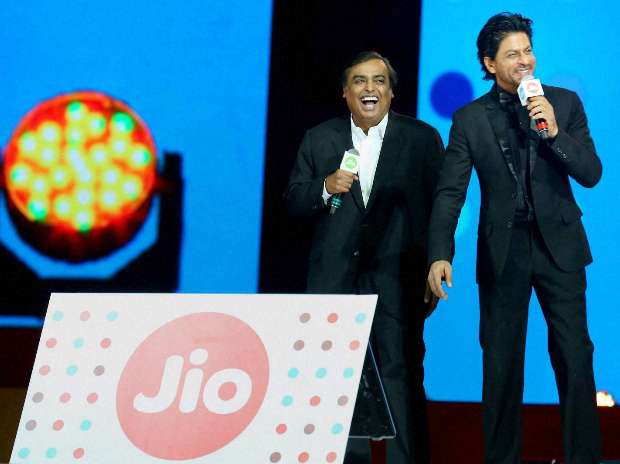Reliance Jio Infocomm Limited, popularly known as Jio, is an Indian mobile network operator that is owned by Reliance Industries and is headquartered in Mumbai, Maharashtra. It operates a national Long-Term Evolution (LTE) network technology with coverage across all 22 telecom circles. Jio does not offer 2G service or 3G service, and instead uses Voice over LTE (VoLTE) to provide voice service on the company’s network. The launch of Reliance Jio has caused a revolution in the Indian telecom industry on a level never seen before. Now, Jio claims to be the world’s largest data network, based on mobile data consumption. Further, Jio also disrupted other industries with the likes of Jio TV, Jio Phones with Jio Phone 3, Jio Fiber, etc.
History
Jio soft-launched on 27 December 2015 (the eve of what would have been the 83rd birthday of Reliance Industries founder Dhirubhai Ambani), with a beta launch for partners and employees, and became publicly available on 5 September 2016. As of 31st January 2019, it is the third-largest mobile network operator in India and the ninth-largest mobile network operator in the world with over 289.44 million subscribers.
The company was registered in Ahmedabad, Gujarat on 15 February 2007 as Reliance Jio Infocomm Limited. In June 2010, Reliance Industries (RIL) bought a majority 95% stake in Infotel Broadband Services Limited (IBSL) for Rs. 4,800 crores. Although unlisted, IBSL was the only company present at that time that won broadband spectrum in all the 22 circles in India in the 4G auction that took place earlier that year.
Later continuing as RIL’s telecom subsidiary, Infotel Broadband Services Limited was renamed as Reliance Jio Infocomm Limited (RJIL) in January 2013.
In June 2015, Jio announced that it would be operational all over the country by the end of 2015. However, four months later in October, the company’s spokesmen stated that the launch was postponed to the financial year 2016-2017.
Later, in July, a PIL led in the Supreme Court by an NGO called the Centre for Public Interest Litigation challenged the intention of the Government of India behind granting of a pan-India license to Jio. The PIL also alleged that Jio was allowed to provide voice telephony along with its 4G data service, by paying an additional fee of just Rs 165.8 crore (the US $23 million) which was arbitrary and unreasonable, and contributed to a loss of Rs 2,284.2 crore (the US $320 million) to the Government.
The Department of Telecommunications (DoT) working under the Ministry of Communications, Government of India, however, refuted all of the claims. In its statement, DoT explained that the rules for 3G and BWA spectrum didn’t restrict BWA winners from providing voice telephony. As a result, the PIL was revoked by the court, and the accusations alleged against Jio were dismissed.
Beta launch
The 4G services were launched internally to Jio’s partners, its staff, and their families on 27th December 2015. Bollywood actor Shah Rukh Khan, who is also the brand ambassador of Jio, kick-started the launch event which took place in Reliance Corporate Park in Navi Mumbai, along with celebrities like A R Rahman, Ranbir Kapoor, and Javed Jaffrey, and filmmaker Rajkumar Hirani. The closed event was witnessed by more than 35,000 RIL employees some of whom were virtually connected from around 1000 locations including Dallas in the United States.

Commercial launch
The company commercially launched its services on 5 September 2016. Within the first month, Jio announced that it had successfully acquired 16 million subscribers. This is the fastest ramp-up by any mobile network operator anywhere in the world. Jio crossed the first 50 million subscriber mark in 83 days since its launch, subsequently crossing the first 100 million subscribers on 22nd February 2017. By October 2017, it had about first 130 million subscribers.
“The idea of Jio was first seeded by my daughter, Isha, in 2011. She was a student at Yale (in the US) and was home for holidays. She wanted to submit some coursework and she said, ‘Dad, the internet in our house sucks‘,” Mukesh Ambani recalled lately in the press.
On 5 July 2018, a fixed-line broadband service named Gigafiber was launched by Reliance Industries Limited’s chairman Mukesh Ambani, during the company’s Annual General Meeting.
Also Read: Paytm – The Torchbearer Of Cashless India
Impact of Jio Launch
Over a very short span of time, Reliance Jio became a phenomenon in India. Reliance’s shares, having languished for several years, took off in early 2017 after it said Jio would emerge from its trial period and begin charging for service. The shares have almost doubled since then.
A price war arose between telecommunication operators and as a result, people were able to access services at very cheap rates.
People suddenly had access to unlimited free voice calls, 4G data, messaging, and related services and jio recharge at a very cheap price as compared to other competitors. Jio spread out like a phenomenon in the nation, acquiring about 1000 customers per minute. Within 83 days of its launch, it crossed the 50-million subscriber milestone, which had taken Airtel 12 years, and Vodafone and Idea 13 years.
Market shares of other major players in the industry, such as Airtel, Vodafone, and Idea fell abruptly. They were forced to re-think and reduce their tariffs. Cost of data cut down to less than Rs. 15/GB from at least Rs. 250/GB. The state-run telecom operator, Bharat Sanchar Nigam Limited (BSNL) also cut down their rates in an unprecedented move. They also started to use their underutilized 7 lakh kilometers of fiber network and reduced internet usage charges.
Jio further spreads its wings to Jio phone, jio TV, jio Phone 3, jio fiber, etc.
For more content like this, Subscribe to our newsletter.
Go to the full page to view and submit the form.


